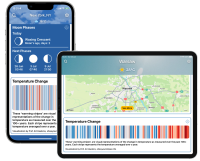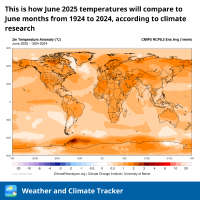Astronomical Autumn vs. Meteorological Autumn

Meteorological Autumn and Astronomical Autumn are two different ways of defining the seasons:
Meteorological Autumn: Meteorological seasons are based on the calendar months and are primarily used by meteorologists and climatologists for consistent and simplified record-keeping and forecasting. In the meteorological definition, autumn is considered to be the three calendar months of September, October, and November in the Northern Hemisphere, and March, April, and May in the Southern Hemisphere. These three-month periods are chosen because they generally represent the transition between the warmest and coldest months of the year.
Astronomical Autumn: Astronomical seasons are based on the tilt of the Earth’s axis in relation to its orbit around the Sun. Astronomical autumn is determined by specific astronomical events, namely the equinox. In the Northern Hemisphere, autumn begins with the autumnal equinox, which usually occurs around September 22nd or 23rd, when the Sun crosses the celestial equator, resulting in day and night being nearly equal in length. In the Southern Hemisphere, the autumnal equinox occurs around March 20th or 21st, marking the beginning of autumn.
While meteorological autumn is based on calendar months, astronomical autumn is based on specific celestial events like the equinox. The meteorological definition is more practical for data analysis and forecasting, while the astronomical definition is tied to astronomical phenomena and the Earth’s position in its orbit.
Different cultures use different ways to talk about seasons. When does autumn start for you?
When does autumn start for you?
This post is also available in: Spanish, Russian, Ukranian, Belarusian, Portuguese, French.



